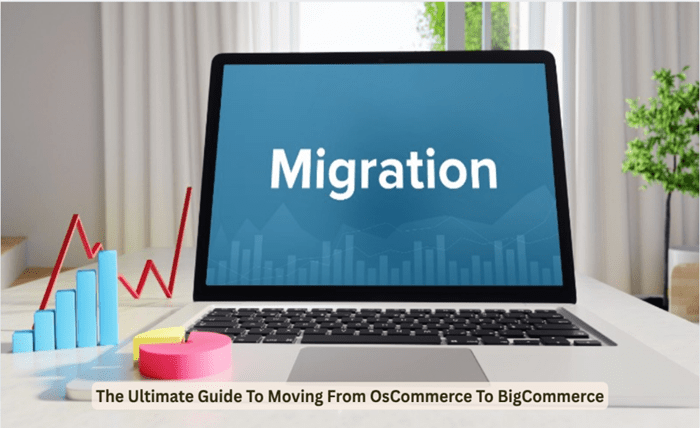
Online commerce is no longer confined to static webpages and online catalogs. Today’s consumers want single-click purchase options, mobile optimization, and baked-in marketing tools.
Many platforms, however, have struggled to keep pace with these evolving expectations. Consequently, numerous organizations are revisiting their digital infrastructure to reflect advances in consumer behavior and technology.
OsCommerce, a previously favored open-source shopping cart software, was many businesses’ first step to doing business on the Internet. However, with an outdated and not fully scalable architecture, how much can it be stretched before it can meet modern e-commerce demands?
Companies seeking to future-proof their internet presence today are more likely to explore solutions that provide a blend of protection, flexibility, and extended capabilities. BigCommerce is, in fact, a robust option.
It provides business tools that require minimal human intervention. Featuring integrated payment gateways, robust SEO tools, responsive mobile capabilities, and multi-channel selling options, it’s gaining steam with business owners looking to update their shop.
Moving from OsCommerce to BigCommerce is not just a ‘migration’ – it’s a business change that potentially yields an incredible ROI through expanding potential clientele, increasing revenue, and improving sales performance.
This guide covers all the key elements of the migration, including technical requirements, planning, and implementation steps to help your migration go as smoothly as possible.
Why Migration Matters
Migration is more than moving to a new system. It’s all about connecting your business to a platform that reduces operating inefficiency and encourages growth. OsCommerce sites often have issues with plugin support, speed, and mobile performance. These constraints relate to the costly performance of such tasks and impact conversion rates.
In contrast, BigCommerce offers a cloud-hosted system with automatic updates and built-in functionality, thereby minimizing the need for third-party modules. Companies can redirect time and resources from troubleshooting to customer outreach and engagement, allowing them to focus on building relationships and enhancing customer satisfaction.
Immigration also ensures future security conformity (an area where OsCommerce often lacks due to outdated community patches).
Step 1: Assessing Your Current Store

Before undergoing a migration, a thorough analysis of the current OsCommerce structure is necessary. This involves reviewing product catalogs, customer databases, order history, and third-party integrations to ensure accurate and timely information.
An obvious but often overlooked inventory of existing assets can help identify what needs to be moved, what can be improvised, and what needs to be discarded. This is where many businesses also realize they have duplicate products, outdated customer records, or customizations that are no longer needed.
Removing or cleaning data before migration helps minimize the struggles and ensures the new store can operate smoothly. In this phase, companies must also determine mission-critical features—such as shipping calculators, payment gateways, and SEO—that are necessary to retain.
Step 2: Selecting The Optimal Migration Path
When moving from OsCommerce to BigCommerce, a store has several options. In this case, the move process is manual, involving exporting, changing product attributes, and re-importing them to BigCommerce. This strategy works well for small stores; however, it can be unsafe when applied to larger stores due to human error and potential risks.
Automated migration tools, however, can make the process smoother. They verify that product descriptions, images, categories, and customer data are transferred correctly. These utilities reduce downtime and also provide mapping for attributes that differ across platforms.
Step 3: Preserving SEO Value
Search engine visibility is one of the major components you stand to lose from migration. OsCommerce websites may have unique URLs and outdated content that can be responsible for inconsistent traffic. If there is no proper redirect, search engines consider the modified URL to be broken, which can ultimately affect your ranking.
BigCommerce allows for SEO URLs, but you must implement 301 redirects from old links. This ensures that current traffic and search equity pass seamlessly. Also, ensure that the meta titles, descriptions, and structured data are being maintained.
Step 4: Optimize Store Design
A migration should not only be a process of transferring data but also an opportunity to redesign. OsCommerce themes are hardly mobile-friendly or up to date. BigCommerce offers a library of responsive templates, as well as a set of custom design templates.
This is the perfect time for businesses to update navigation, upgrade checkout flows, and build brand consistency. Product quick view, predictive search, and mobile-friendly product grids contribute to the improved user experience.
Minimalist design concepts and faster load times are of great help to conversions on modern web designs. Approaching the migration as a technical and design evolution makes your investment go further.
Step 5: Integrating Third-Party Applications
OsCommerce tends to have high plugin dependency and requires custom coding for analytics, CRM, or advanced shipping rules. BigCommerce takes care of this for you with its App Marketplace.
Integrating email marketing, inventory management, and accounting systems becomes seamless and efficient. Sell on Amazon, eBay, and social media from one dashboard using multi-channel integrations.
Step 6: Dry Run Test
Testing is the most important phase in the process. Errors in data migration, broken links, and poor product matching can easily frustrate customers, even when they appear unnoticed.
Businesses should verify the sandbox at BigCommerce before changing their domain. This even includes payment gateways, shipping calculators, tax settings, and user flows. By testing orders, you can ensure that your checkout process flows smoothly.
Step 7: Training Your Team
With a new platform, you have to adapt as a team. BigCommerce is easy to use, but employees still need to be trained in how to handle product catalogs, execute orders, and get the most out of the reporting tools.
Training ensures that employees are not dependent on outdated workflows. Knowing how to use automation tools, read through analytics dashboards, and utilize marketing integrations is the key to getting the most out of your platform.
Step 8: Post-Migration Maintenance
Once up and running, you’ll need to monitor diligently. Performance SEO audits and customer feedback serve as early warning systems for potential problems.
Companies must continually update their product catalogs, optimize new landing pages, and monitor abandoned carts. Using BigCommerce’s analytics provides insight into what is working and what is not working.
Conclusion
Moving from OsCommerce to BigCommerce is more than just an upgrade; it is a transformation that changes how a company functions in the digital age.
Assessing assets, mapping out data moves, implementing redirects, and training teams are all critical tasks. Companies that work through the process in a structured manner protect their current performance and uncover potential future growth opportunities.
For merchants seeking to expand their online presence and transform their business operations, BigCommerce offers a platform and tools that enable them to compete effectively in the new era of e-commerce.




